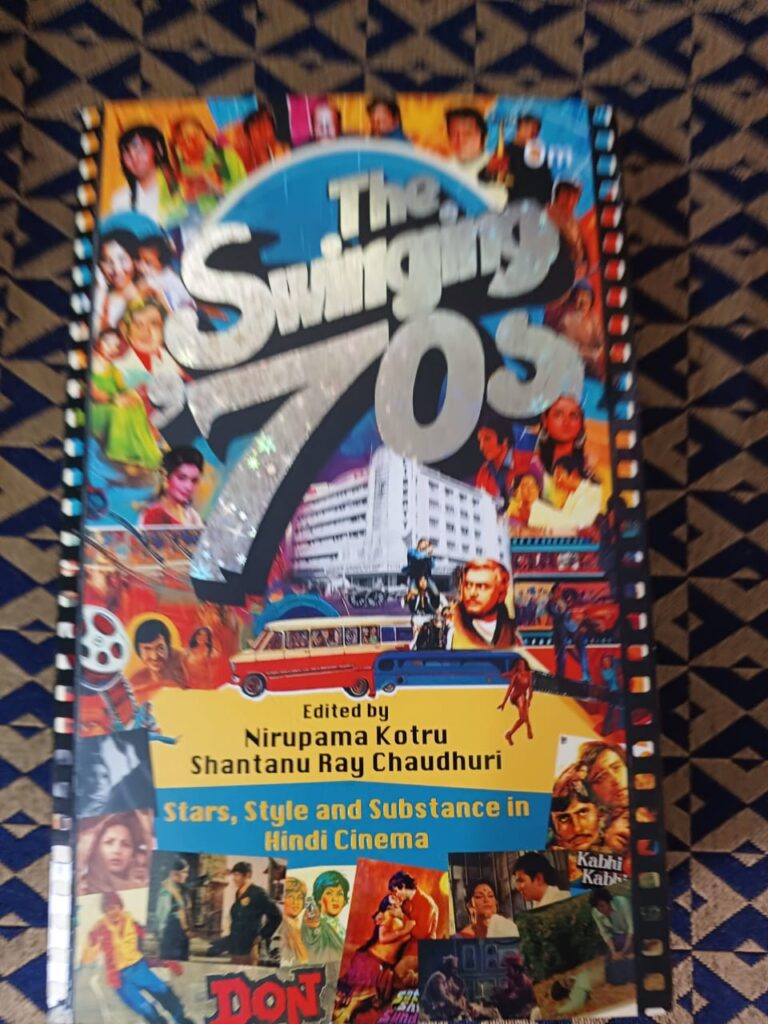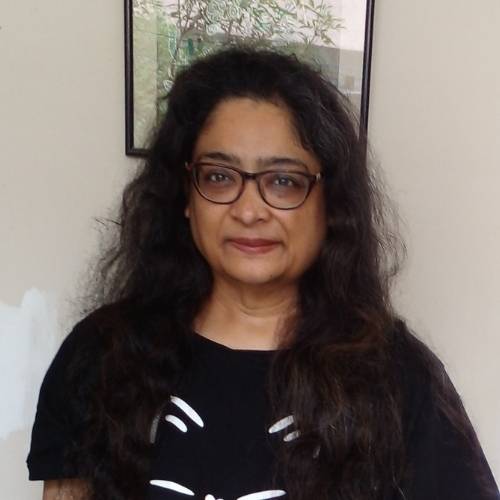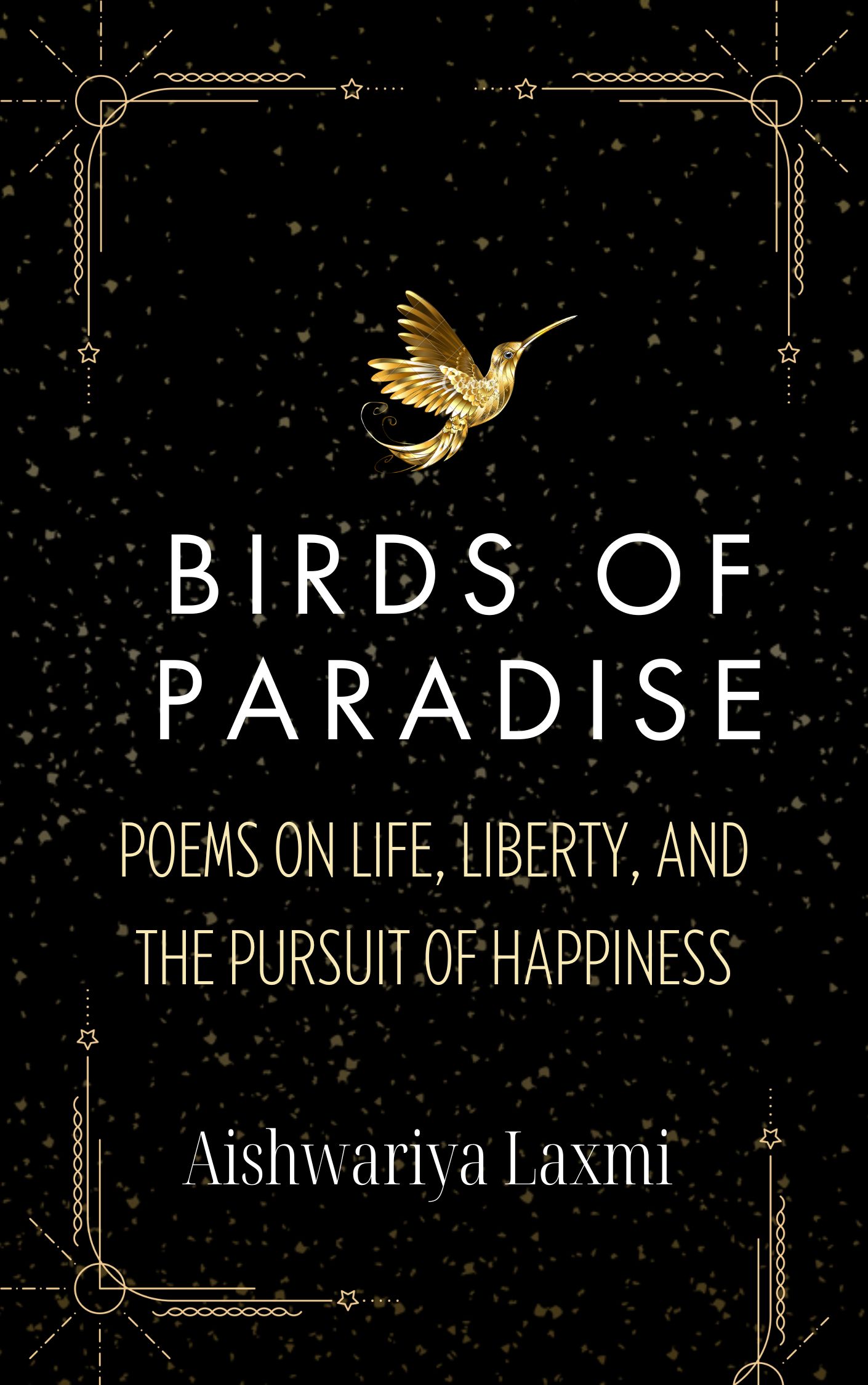Edited by Nirupama Khotru and Shantanu Ray Chaudhuri, Om Books International, 2024.
Reviewed by K.S.Loganathan
This 624-page book is an anthology of 50 essays penned by 42 writers including the editors. Nirupama Khotru is a former Director (Films) in the Ministry of Information and Broadcasting, Government of India, and Shantanu Ray Choudhuri is the Editor-in-Chief of Om Books International. The writers include Amitava Kumar, Subhash Ghai, Kaveree Bamzai and Sathya Saran.
The 1970s were Bollywood’s heyday with each of the 4945 films made in the decade opening in nearly 10000 single-screen cinema halls on Fridays with fanfare. A generation grew up in which cinema was a liberation into the dream world , an escape from everyday life.The magic bound us in a spell by the art of picture and story. This is a world where an audience of all classes came to watch and dream open-eyed, cheer or boo wildly, and compared each new film with the director’s and actors’ previous work after the first-day, first- show . It was a mass entertainment spectacle that the Indian Premier League tries to emulate in sport today. Soon the light and shadows in these single cinema halls would recede, as television, video cassette recorders, and later, streaming platforms and smartphones, invaded the homes. Storytelling too, would be replaced by content and narratives, but somehow cinema survived as a culture, and a window to the world.

The 1970s were a decade of anger and anguish in India as public protests and government crackdowns intensified and as disillusionment dawned and cynicism set in. The country was struggling to keep its traditions and culture alive while trying to modernize its different aspects, and lurch toward consumerism.
The cinema of the time dealt with themes as diverse as bootleggers and corruption, sharp business practices, and class conflicts, alongside family values like love, friendship, and empathy . Each new-wave film then released examined the nature of society and its effect upon people’s actions, and embodied a good deal of social criticism. For the most part, however, this was an era of maximalist cinema, morality plays, and escapist fare. All types of films- horror, disaster, thriller,devotional, fantasy, masala, musical, crime, romantic, and social dramas- formed the mix. There were some drawbacks too, such as excessive violence and revenge, crime and aggressive behavior, depiction of glamour and luxurious lifestyles and the objectification of women.
The decade began with Mera Naam Joker, Prem Pujari, and Gopi marking the end of an epoch of acting dominated by Raj Kapoor, Dev Anand, and Dilip Kumar respectively. New faces like Dharmendra, Jeetendra, Rajesh Khanna, Amitabh Bachchan and Vinod Khanna, Hema Malini, Jaya Bhaduri, Zeenat Aman, Dimple Kapadia, Neetu Singh, and Shabana Azmi appeared and the films began telling a different tale, with a focus on individual narratives and modernity and with ideas freely borrowed from elsewhere. Writers Salim Khan and Javed Akhtar introduced the ‘Angry Young Man’ single- mindedly fighting the system, a role that Bachchan played to perfection and which appealed to urban youth. While the Big Four blockbuster makers, Prakash Mehra, Manmohan Desai, Ramesh Sippy, and Yash Chopra, ruled the roost, directors like Hrishikesh Mukherjee , Gulzar, and Basu Chatterjee also blazed a new trail with their middle- of- the- road cinema veering between art and business. Film-makers like Mrinal Sen, Shyam Benegal ,Girish Karnad, and Mani Kaul spearheaded the parallel cinema with themes of women empowerment , identity, and liberation. The Marathi playwright, Vijay Tendulkar and Director Shyam Benegal bring out in ‘Nishant’ the true story of a woman’s abduction in pre-independence India in Hyderabad State that sparked a peasant uprising against feudal rule. It was deemed ‘a negative film’.
The ability to connect to various music types- Blues, Latino, Cuban big band, Japanese, along with Hindustani classical, helped R.D.Burman create new forms that captivated the masses. Composers like Laxmikant and Pyarelal scored the music for 166 films in the decade- earthy, connected to Indian roots, and dominated by the dholak, violin, sitar, and tabla. Cabaret performances by Helen, Padma Khanna ,Bindu, and Aruna Irani added to the glitter.
As a fresh graduate at the time ,I had watched some 500 films in theatres and another 1000 of that era at home since, picking up a working knowledge of Hindi in the process. I read this book from cover to cover over a week. This was a mistake, as many writers have repeated the details of a film before dealing with its special features and it was jarring. A listing of the movies that are cited, with the plotlines and the actors/directors names could have avoided this. You will have to take it in bite-sized chunks. My favorite films of that era are Caravan, Bobby, Sholay, Deewar, and Shatranj Ke Khiladi, all of which are eminently rewatchable. The wooden spoon goes to ‘Shalimar’, a megaflop. This is a book that captures the frenetic energy of the cinema of the 1970s, an era unlikely to be epitomized solely by oral history, and it is to be put alongside your DVDs and photo albums of the era.
Bought the book on Amazon












2 Responses
This sounds like such an informative read, and wow, your review is incredible! Thank you for going so into depth and for giving so much detail on the book. It seems to cover many important and relevant topics, especially with past and present being so interconnected. The way in which cinema can convey the feelings, atmosphere, and events of the time period a movie was created in is so valuable.
Thanks, Damyanti, for stopping by. My dad reviewed the book. I will pass on your compliments:)